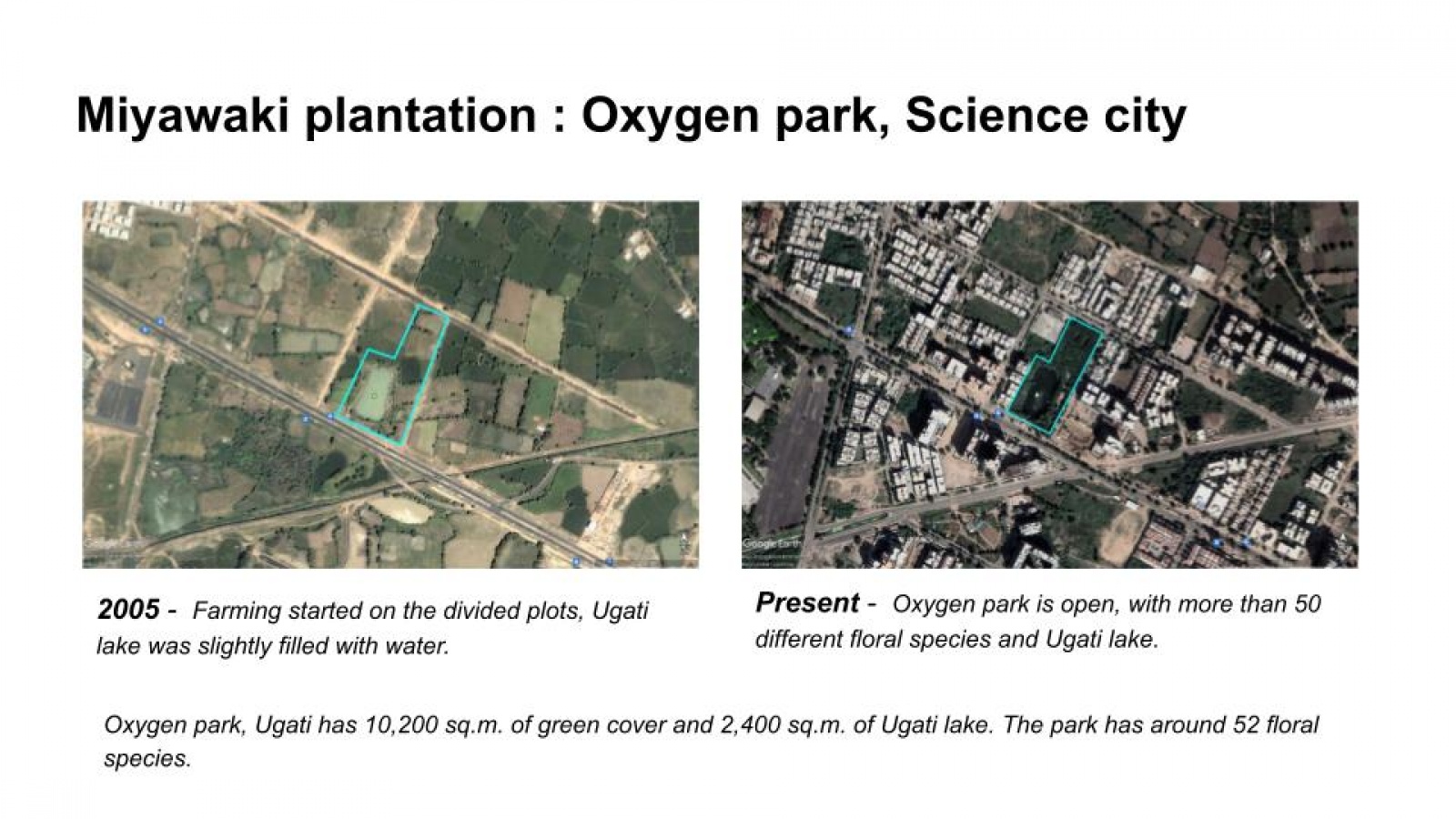Your browser is out-of-date!
For a richer surfing experience on our website, please update your browser. Update my browser now!
For a richer surfing experience on our website, please update your browser. Update my browser now!
The interest in nature-based solutions to mitigate the impending effects of climate change has led to ‘greening’ policies being developed across the globe. In India and in Ahmedabad city too, green buildings, vertical gardens, plantations (called urban foresting) in the city and its periphery, and ‘greening’ urban parks, are some of the processes which have been proposed and implemented. At the same time with an ever-increasing human population, cities are growing and expanding into the peri-urban and rural regions. The policies that guide ‘greening’ and ‘development’ though are still not sensitive to geographies, ecologies, and dangers of climate change. As lands are razed and native flora is cleared out for development, indigenous biodiversity is threatened and being replaced with low diversity, often exotic species monocultures that could be resource expensive to sustain or invasive in nature. This paper will review national and local level policies of ‘greening’ in relation to international conventions and local needs. It will attempt to find gaps in the greening process, and mismatches between what is proposed and what is being implemented at the local level. For ground-truthing, the study shall assess two urban features - streetside plantation design and Miyawaki plantations in Ahmedabad city. Miyawaki plantation sites include the more recent Oxygen park - Science city, Riverfront Miyawaki, and the older plantations at Shreyas Foundation. The streets included are the main veins of the city - SG Highway, CG road, and Ashram Road. Interview surveys would be carried out with Miyawaki plantation developers & managers, in the context of floral palettes and resources used for the SWOT analysis of the sites (Strengths, Weaknesses, and Opportunities). The results will thus review and offer recommendations for future greening projects and help amend policies and the site-level implementation of greening.
.jpg)

.jpg)
.jpg)
.jpg)
.jpg)
.jpg)
.jpg)
.jpg)
.jpg)